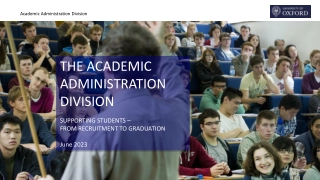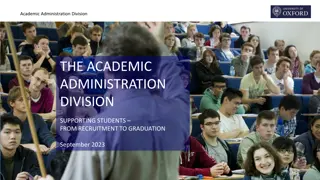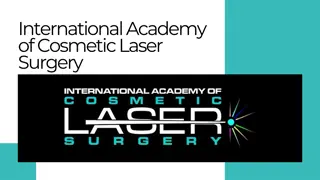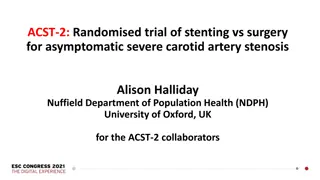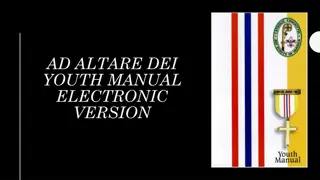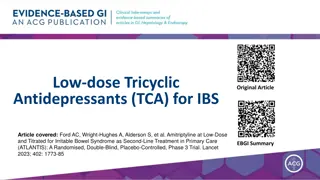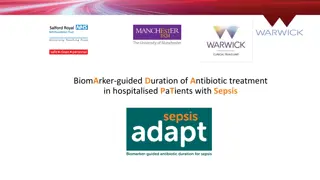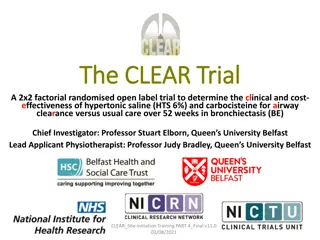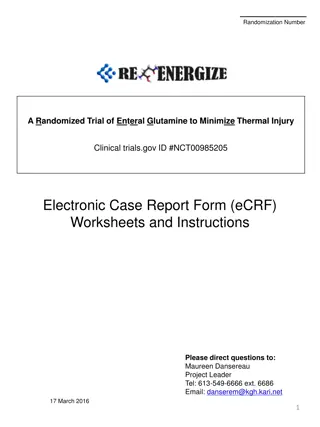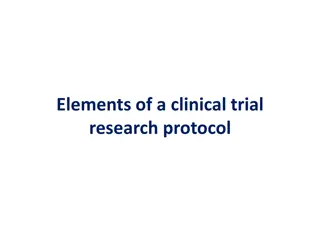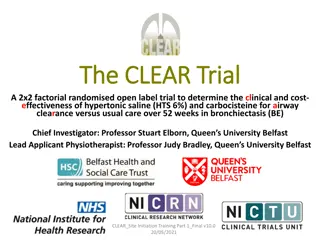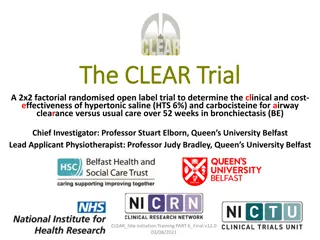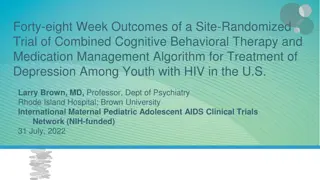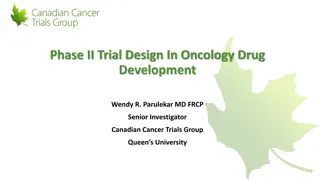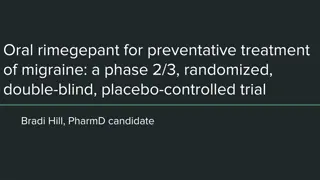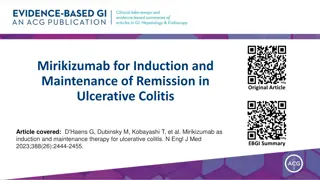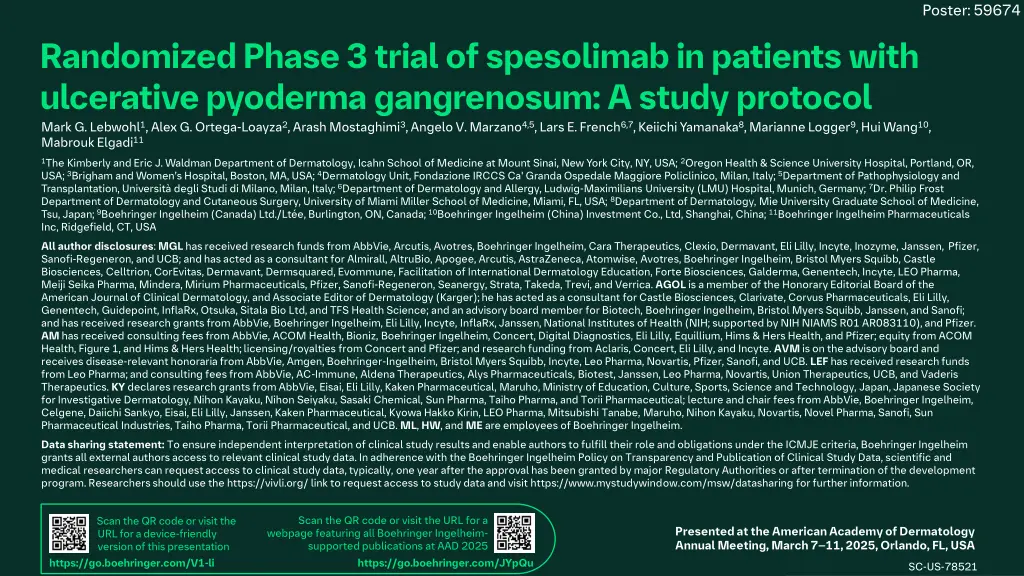
Randomized Phase 3 Trial of Spesolimab in Ulcerative Pyoderma Gangrenosum Patients
Explore the study protocol of a randomized phase 3 trial evaluating the efficacy of spesolimab in patients with ulcerative pyoderma gangrenosum. The trial protocol involves multiple international institutions and key opinion leaders in dermatology. The detailed disclosures of the authors regarding affiliations, research funds, and consulting activities are also provided. Access to clinical study data is facilitated following the Boehringer Ingelheim Policy on Transparency and Publication of Clinical Study Data.
Download Presentation

Please find below an Image/Link to download the presentation.
The content on the website is provided AS IS for your information and personal use only. It may not be sold, licensed, or shared on other websites without obtaining consent from the author. If you encounter any issues during the download, it is possible that the publisher has removed the file from their server.
You are allowed to download the files provided on this website for personal or commercial use, subject to the condition that they are used lawfully. All files are the property of their respective owners.
The content on the website is provided AS IS for your information and personal use only. It may not be sold, licensed, or shared on other websites without obtaining consent from the author.
E N D
Presentation Transcript
Poster: 59674 Randomized Phase 3 trial of spesolimab in patients with ulcerative pyoderma gangrenosum: A study protocol Mark G. Lebwohl1, Alex G. Ortega-Loayza2, Arash Mostaghimi3,Angelo V. Marzano4,5,Lars E. French6,7,Keiichi Yamanaka8, Marianne Logger9, Hui Wang10, Mabrouk Elgadi11 1The Kimberly and Eric J. Waldman Department of Dermatology, Icahn School of Medicine at Mount Sinai, New York City, NY, USA; 2Oregon Health & Science University Hospital, Portland, OR, USA; 3Brigham and Women s Hospital, Boston, MA, USA; 4Dermatology Unit, Fondazione IRCCS Ca' Granda Ospedale Maggiore Policlinico, Milan, Italy; 5Department of Pathophysiology and Transplantation, Universit degli Studi di Milano, Milan, Italy; 6Department of Dermatology and Allergy, Ludwig-Maximilians University (LMU) Hospital, Munich, Germany; 7Dr. Philip Frost Department of Dermatology and Cutaneous Surgery, University of Miami Miller School of Medicine, Miami, FL, USA; 8Department of Dermatology, Mie University Graduate School of Medicine, Tsu, Japan; 9Boehringer Ingelheim (Canada) Ltd./Lt e, Burlington, ON, Canada; 10Boehringer Ingelheim (China) Investment Co., Ltd, Shanghai, China; 11Boehringer Ingelheim Pharmaceuticals Inc, Ridgefield, CT, USA All author disclosures: MGL has received research funds from AbbVie, Arcutis, Avotres, Boehringer Ingelheim, Cara Therapeutics, Clexio, Dermavant, Eli Lilly, Incyte, Inozyme, Janssen, Pfizer, Sanofi-Regeneron, and UCB; and has acted as a consultant for Almirall, AltruBio, Apogee, Arcutis, AstraZeneca, Atomwise, Avotres, Boehringer Ingelheim, Bristol Myers Squibb, Castle Biosciences, Celltrion, CorEvitas, Dermavant, Dermsquared, Evommune, Facilitation of International Dermatology Education, Forte Biosciences, Galderma, Genentech, Incyte, LEO Pharma, Meiji Seika Pharma, Mindera, Mirium Pharmaceuticals, Pfizer, Sanofi-Regeneron, Seanergy, Strata, Takeda, Trevi, and Verrica. AGOL is a member of the Honorary Editorial Board of the American Journal of Clinical Dermatology, and Associate Editor of Dermatology (Karger); he has acted as a consultant for Castle Biosciences, Clarivate, Corvus Pharmaceuticals, Eli Lilly, Genentech, Guidepoint, InflaRx, Otsuka, Sitala Bio Ltd, and TFS Health Science; and an advisory board member for Biotech, Boehringer Ingelheim, Bristol Myers Squibb, Janssen, and Sanofi; and has received research grants from AbbVie, Boehringer Ingelheim, Eli Lilly, Incyte, InflaRx, Janssen, National Institutes of Health (NIH; supported by NIH NIAMS R01 AR083110), and Pfizer. AM has received consulting fees from AbbVie, ACOM Health, Bioniz, Boehringer Ingelheim, Concert, Digital Diagnostics, Eli Lilly, Equillium, Hims & Hers Health, and Pfizer; equity from ACOM Health, Figure 1, and Hims & Hers Health; licensing/royalties from Concert and Pfizer; and research funding from Aclaris, Concert, Eli Lilly, and Incyte. AVM is on the advisory board and receives disease-relevant honoraria from AbbVie, Amgen, Boehringer-Ingelheim, Bristol Myers Squibb, Incyte, Leo Pharma, Novartis, Pfizer, Sanofi, and UCB. LEF has received research funds from Leo Pharma; and consulting fees from AbbVie, AC-Immune, Aldena Therapeutics, Alys Pharmaceuticals, Biotest, Janssen, Leo Pharma, Novartis, Union Therapeutics, UCB, and Vaderis Therapeutics. KY declares research grants from AbbVie, Eisai, Eli Lilly, Kaken Pharmaceutical, Maruho, Ministry of Education, Culture, Sports, Science and Technology, Japan, Japanese Society for Investigative Dermatology, Nihon Kayaku, Nihon Seiyaku, Sasaki Chemical, Sun Pharma, Taiho Pharma, and Torii Pharmaceutical; lecture and chair fees from AbbVie, Boehringer Ingelheim, Celgene, Daiichi Sankyo, Eisai, Eli Lilly, Janssen, Kaken Pharmaceutical, Kyowa Hakko Kirin, LEO Pharma, Mitsubishi Tanabe, Maruho, Nihon Kayaku, Novartis, Novel Pharma, Sanofi, Sun Pharmaceutical Industries, Taiho Pharma, Torii Pharmaceutical, and UCB. ML, HW, and ME are employees of Boehringer Ingelheim. Data sharing statement: To ensure independent interpretation of clinical study results and enable authors to fulfill their role and obligations under the ICMJE criteria, Boehringer Ingelheim grants all external authors access to relevant clinical study data. In adherence with the Boehringer Ingelheim Policy on Transparency and Publication of Clinical Study Data, scientific and medical researchers can request access to clinical study data, typically, one year after the approval has been granted by major Regulatory Authorities or after termination of the development program. Researchers should use the https://vivli.org/ link to request access to study data and visit https://www.mystudywindow.com/msw/datasharing for further information. Scan the QR code or visit the URL for a webpage featuring all Boehringer Ingelheim- supported publications at AAD 2025 https://go.boehringer.com/JYpQu Scan the QR code or visit the URL for a device-friendly version of this presentation https://go.boehringer.com/V1-li Presented at the American Academy of Dermatology Annual Meeting, March 7 11, 2025, Orlando, FL, USA SC-US-78521
Introduction Pyoderma gangrenosum (PG) is a rare, inflammatory, neutrophilic dermatosis1 Ulcerative PG begins as a small pustule that rapidly progresses to painful skin ulcers with violaceous borders and surrounding erythema1,2 Interleukin-36 (IL-36) is thought to play a key role in PG pathogenesis3,4 Spesolimab, a novel, humanized monoclonal antibody against the IL-36 receptor, has demonstrated efficacy in generalized pustular psoriasis (GPP), another neutrophilic dermatosis5 Due to the rarity of the disease, there are few randomized trials in patients with PG; thus, current evidence supporting PG treatments is largely based on case studies1 Aim Enrollment This randomized, placebo-controlled, multicenter, Phase 3 study will assess the use of spesolimab in patients with ulcerative PG Approximately 90 participants worldwide will be enrolled in the trial GPP, generalized pustular psoriasis; IL, interleukin; PG, pyoderma gangrenosum. 1. Maverakis E, et al. Nat Rev Dis Primers. 2020;6:81; 2. Su R, et al. Medicine (Baltimore). 2024;103:e39634; 3. Guenin SH, et al. JAAD Case Rep. 2023;34:18 22; 4. Ma L, et al. Clin Exp Dermatol. 2023;49:82 4; 5. Bachelez H, et al. N Engl J Med. 2021;385:2431 44. 2
Who is taking part? Key inclusion criteria Key exclusion criteria Aged 18 years Target PG ulcer measuring >80 cm2 Chronic, non-inflamed PG wounds or ulcers that are not responsive to immunosuppressive therapy Confirmed diagnosis of ulcerative PG ( 10 points on the PARACELSUS score)* that requires systemic therapy Active ulcer infection; or persistent or recurring bacterial infection requiring systemic antibiotic therapy, or clinically significant viral, fungal, or parasitic infections within 2 weeks prior to the screening visit At least one measurable (defined as measuring 5 cm2) target PG ulcer At the time of screening visit, 6 months since target ulcer in the current PG episode was diagnosed Active TB, HIV, viral hepatitis, other severe/ progressive/ uncontrolled condition (e.g. hepatic disease), or malignancy Prior exposure to IL-36 receptor inhibitors including spesolimab *The diagnosis of ulcerative PG will be confirmed by an adjudication committee. Trial participants with mixed PG subtypes are eligible as long as the target lesion is of the ulcerative subtype. Target ulcers >6 months since diagnosis are allowed if they are active and progressing, as judged by the investigator, and confirmed by an adjudication committee. Participants with latent TB may be included if treatment of latent TB, as per local guidelines, is initiated prior to randomization and completed during the course of the trial. GPP, generalized pustular psoriasis; HIV, human immunodeficiency virus; ICH-GCP, International Council for Harmonisation Good Clinical Practice; IL, interleukin; PG, pyoderma gangrenosum; TB, tuberculosis. 3
Study design The trial started in January 2025, with estimated trial completion in October 2026 Part 1: Weeks 0 26* Part 2: Weeks 28 52 Spesolimab 900mg i.v. q4w + low-dose oral corticosteroid (OCS) (OCS tapered off by Week 8) n=60 NCR Spesolimab 900mg i.v. q4w Patients with ulcerative PG requiring systemic therapy Spesolimab 900mg i.v. q4w R (2:1) R (1:1) CR Placebo i.v. q4w Placebo i.v. q4w + low-dose OCS (OCS tapered off by Week 8) n=30 Week 26: Assessment of primary endpoint* An adjudication committee will assess: Confirmation of the PG diagnosis Confirmation of the target PG ulcer (in patients with several ulcers of 5 cm2) Confirmation that PG ulcer(s) are active and progressing (if time since first PG ulcer diagnosis is >6 months) Judgement whether wounds or ulcers are active or chronic, non-inflamed and not responsive to immunosuppressive therapy *Confirmation of primary endpoint will occur at Week 28. Randomization stratified by target PG ulcer size categories (<40 cm2 and 40 cm2) and presence of associated underlying inflammatory disease at baseline. Trial participants who experience disease recurrence in the randomized double-blind arms in Part 2 can be offered open-label spesolimab 900 mg i.v. q4w at the time of recurrence. CR, complete response (i.e. complete closure of all PG ulcers); i.v., intravenous; NCR, non-complete response; OCS, oral corticosteroid; PG, pyoderma gangrenosum; q4w, every 4 weeks; R, randomization. 4
Endpoints Additional endpoints Primary endpoint Complete ulcer closure (PGAR-100*) of the target ulcer up to Week 26, confirmed 2 weeks later PG area reduction by 50% (PGAR-50) of the target ulcer Complete ulcer closure (PGAR-100) of any measurable ulcer Complete ulcer closure (PGAR-100) of all measurable ulcers *PG area reduction by 100% (complete closure and re-epithelization of a PG ulcer without drainage and requirements for dressing) Time to recurrence among trial participants who had achieved complete response (CR, complete closure of all PG ulcers) NRS Pain 3 point reduction in score from baseline DLQI score of <5 Recurrence is defined as emergence of the disease (PG ulcer[s]) at the previous ulcer sites(s) or emergence of any new PG ulcer(s). Additional efficacy, safety and biomarker measures will also be assessed Conclusion The results of this Phase 3 randomized trial will provide safety and efficacy data on spesolimab as a potential treatment for ulcerative PG CR, complete response; DLQI, Dermatology Life Quality Index; NRS Pain, Numeric Rating Scale for Pain; PG, pyoderma gangrenosum; PGAR, PG area reduction. Acknowledgments: This study was supported and funded by Boehringer Ingelheim. We thank all investigators and patients for their contributions to study implementation. The authors meet criteria for authorship as recommended by the International Committee of Medical Journal Editors (ICMJE) and did not receive payment related to the development of this poster. Boehringer Ingelheim was given the opportunity to review the poster for medical and scientific accuracy, as well as intellectual property considerations. Eleanor James, BSc, of Nucleus Global, provided medical writing support, which was contracted and funded by Boehringer Ingelheim. 5

